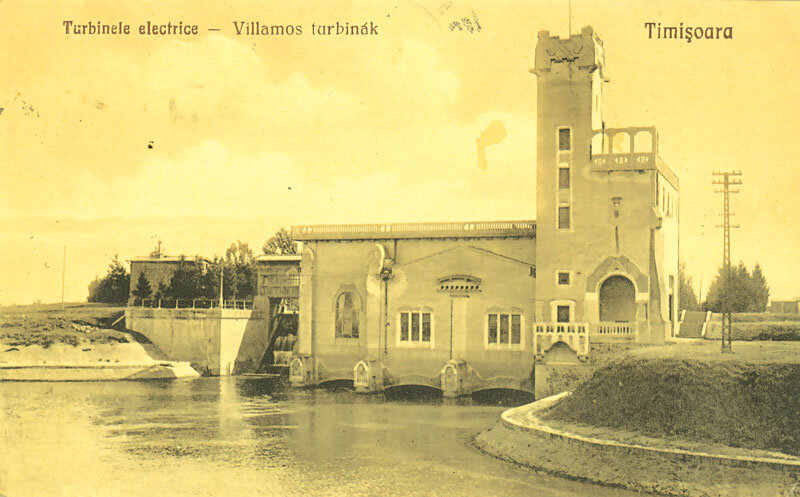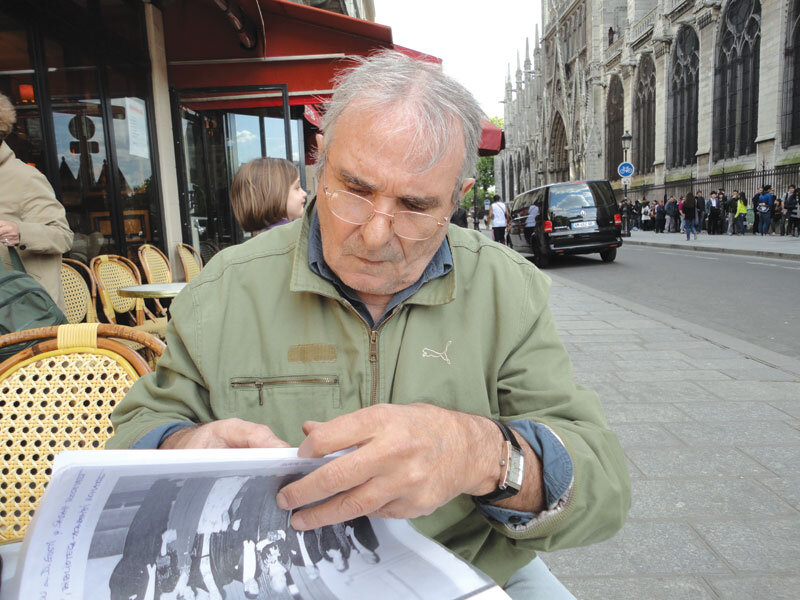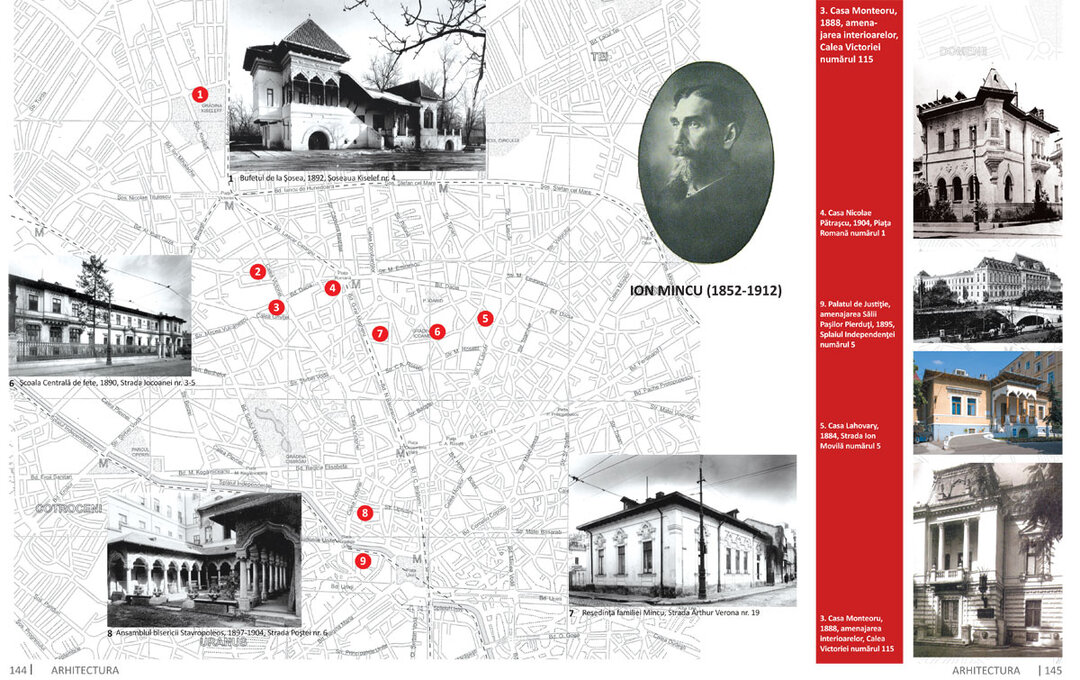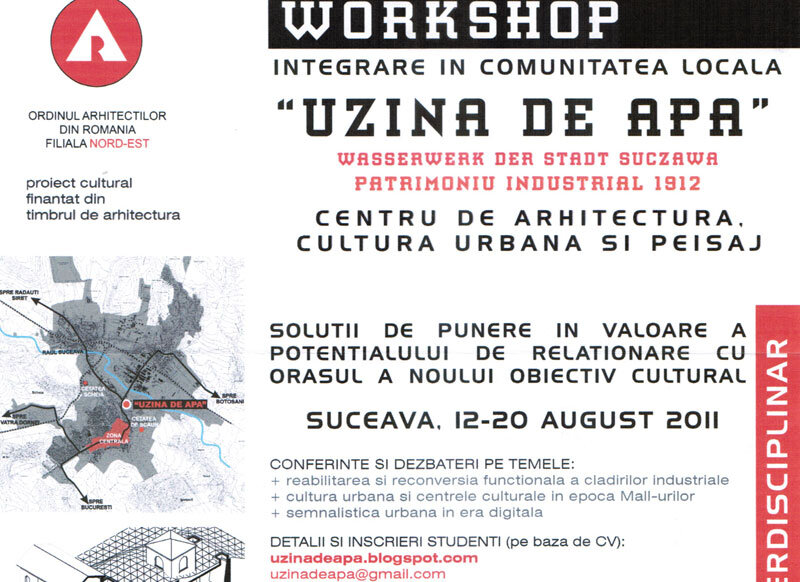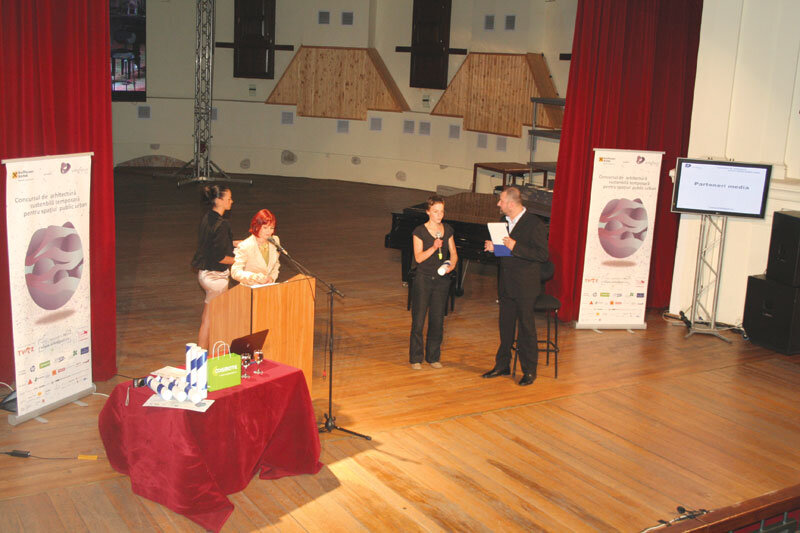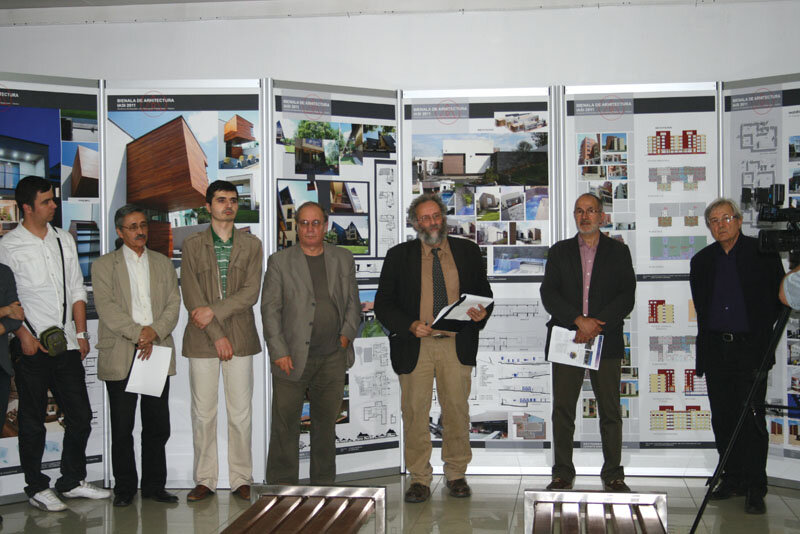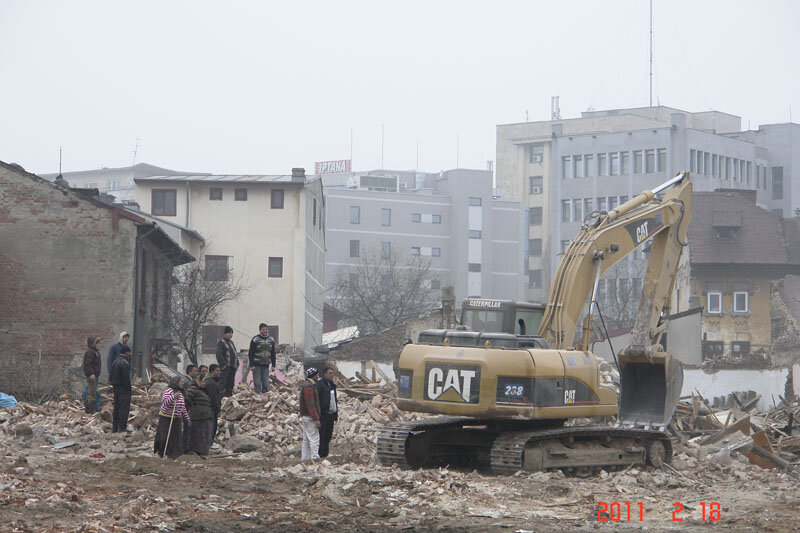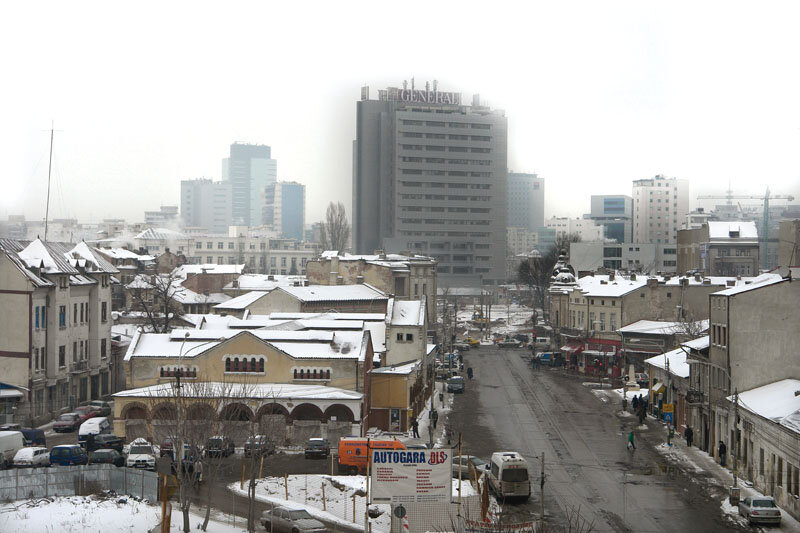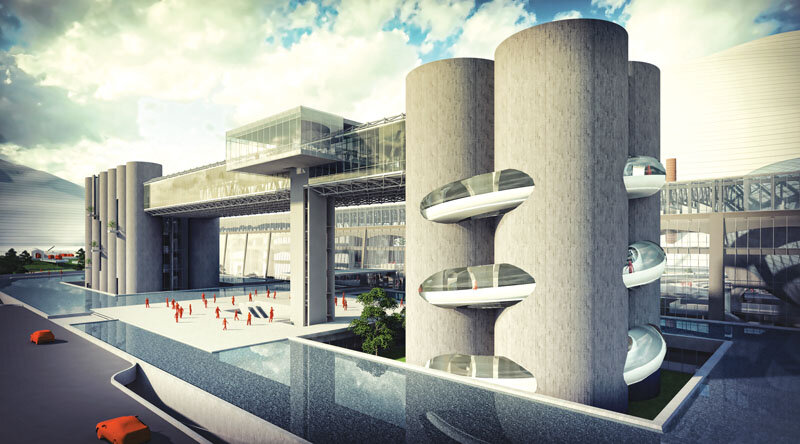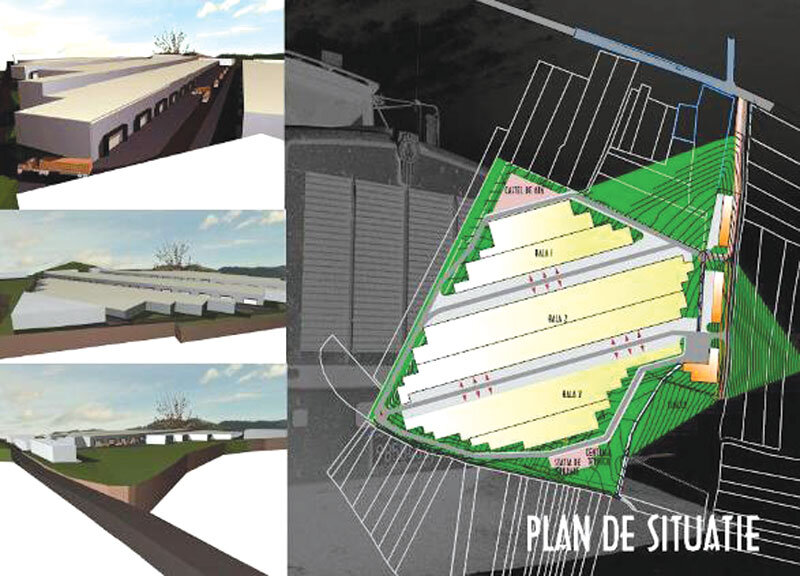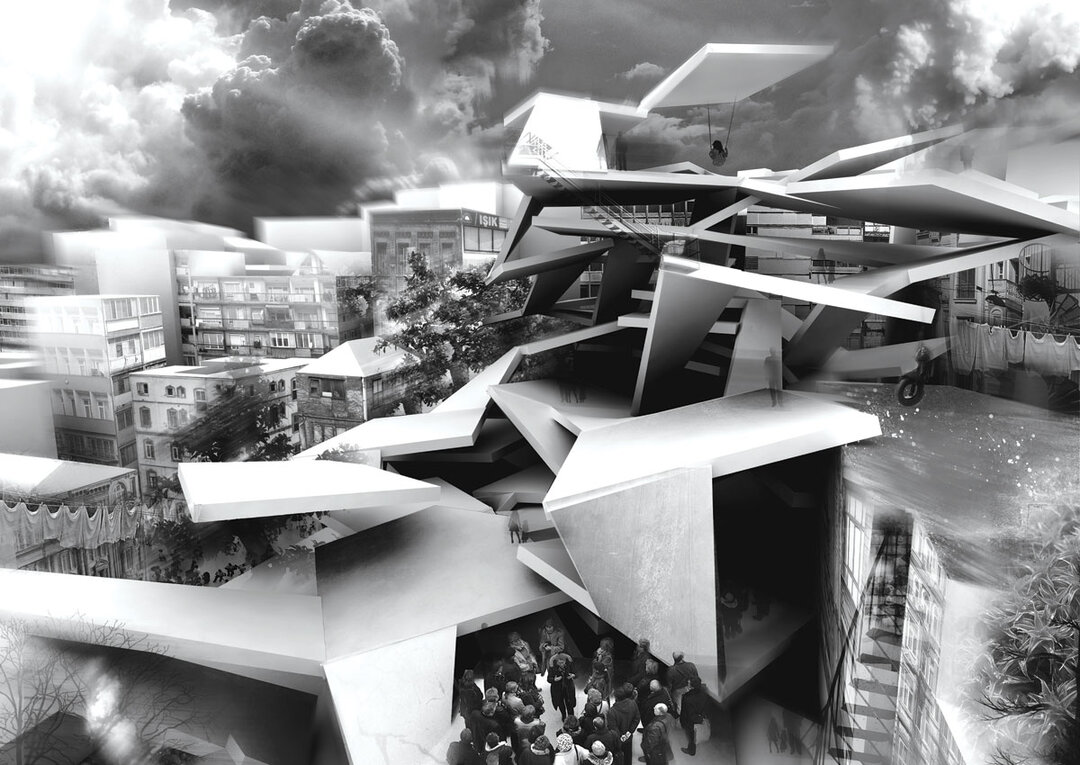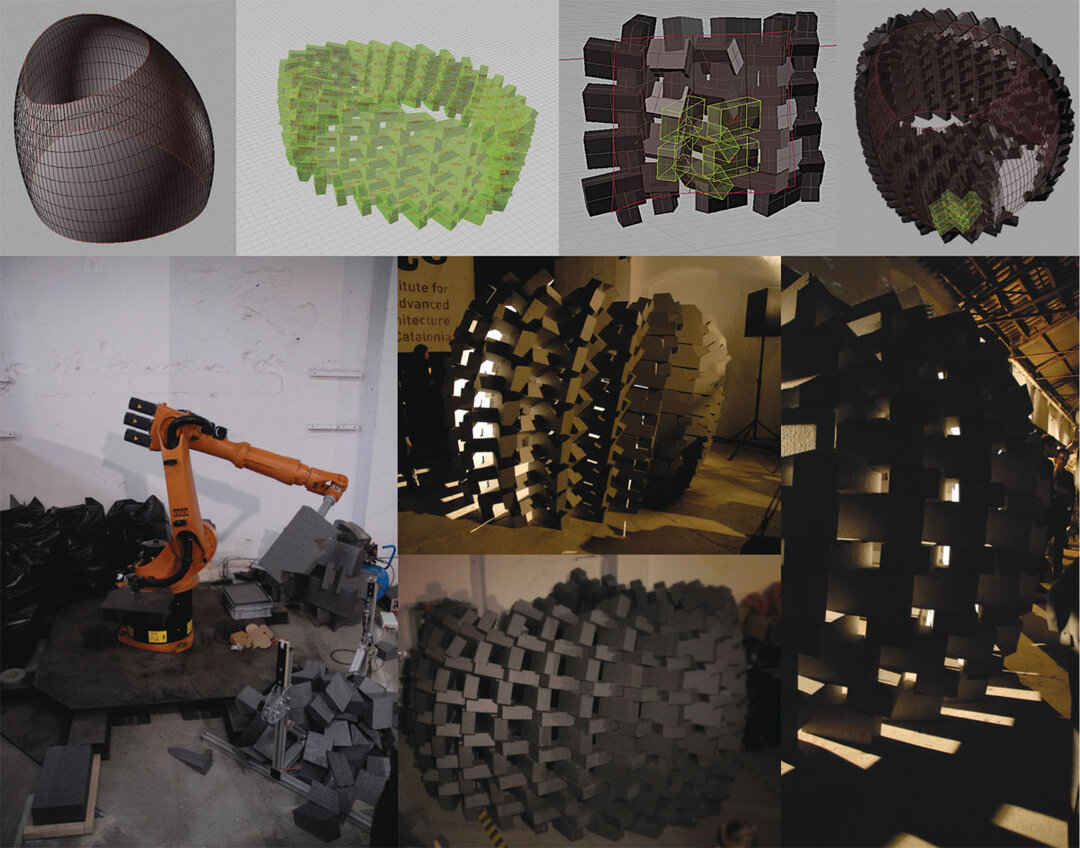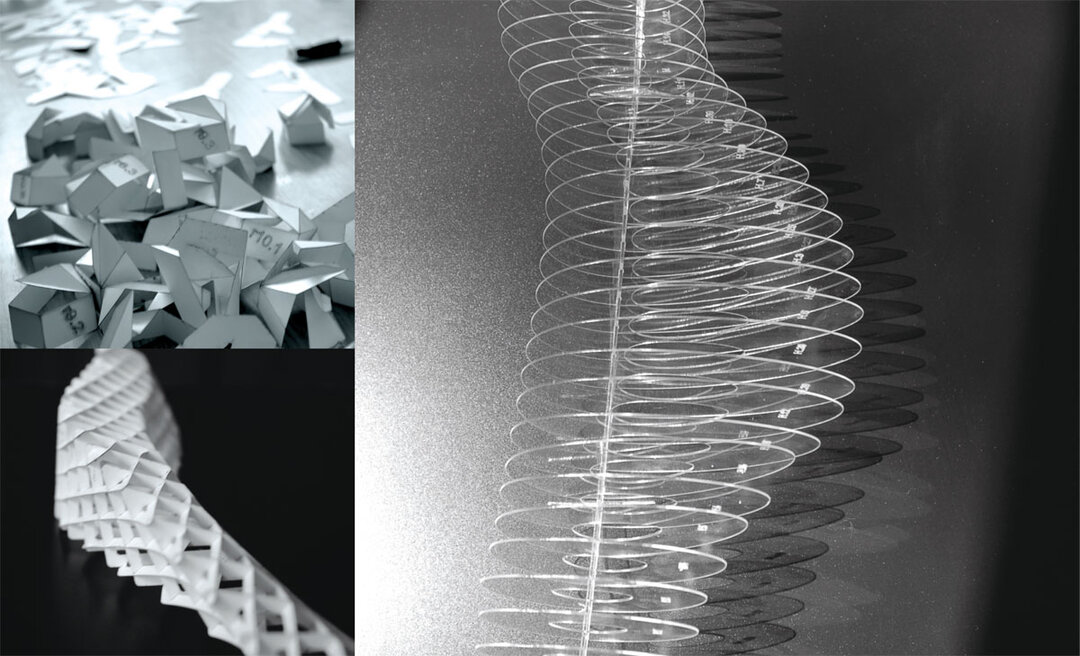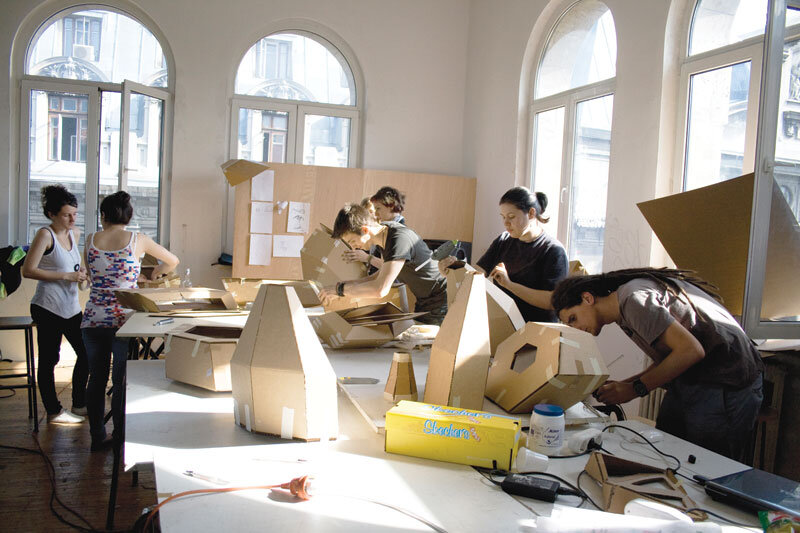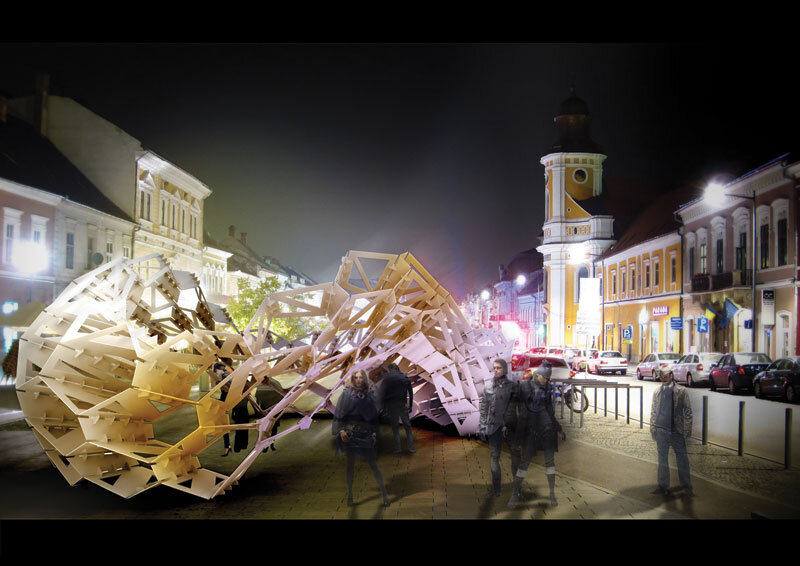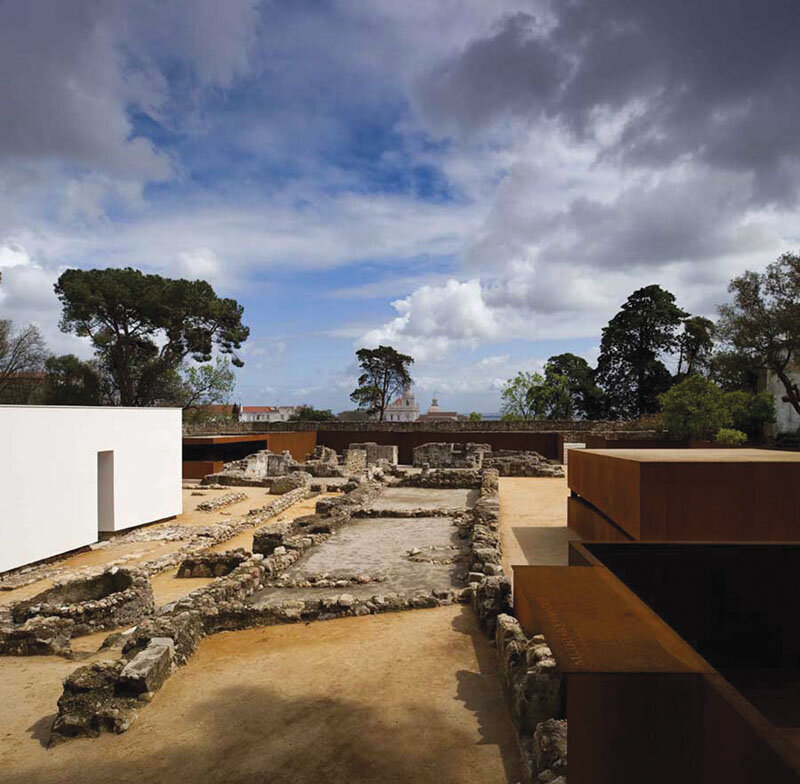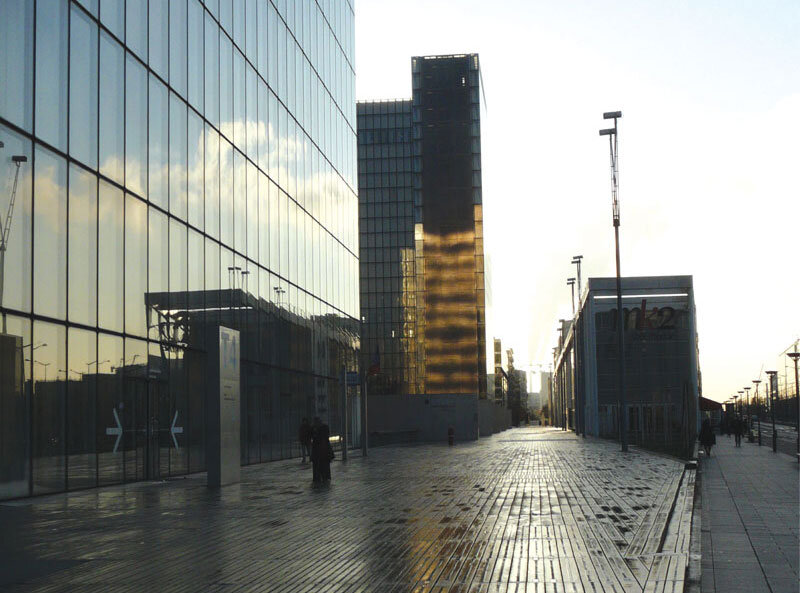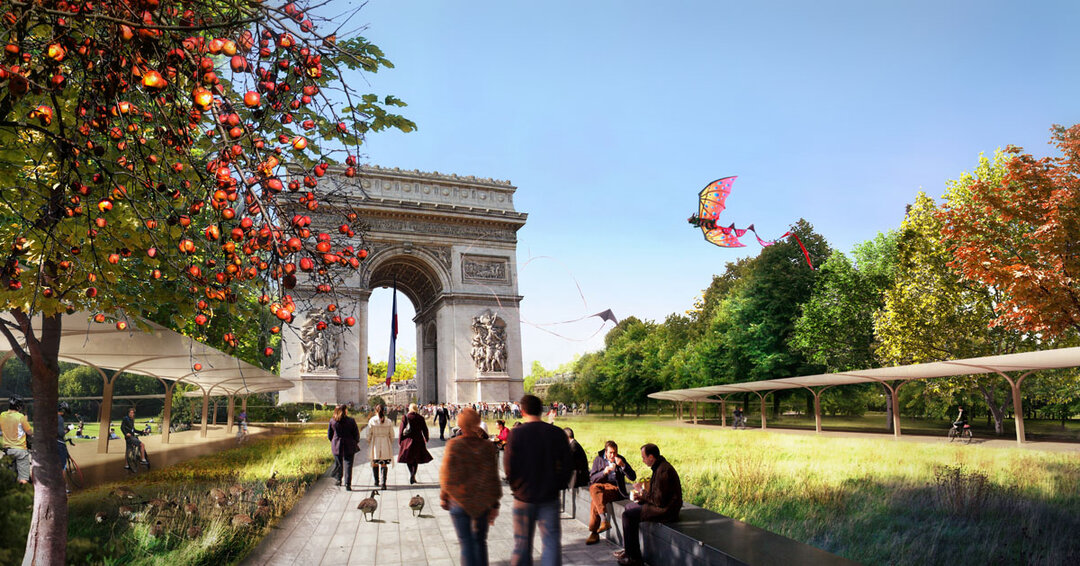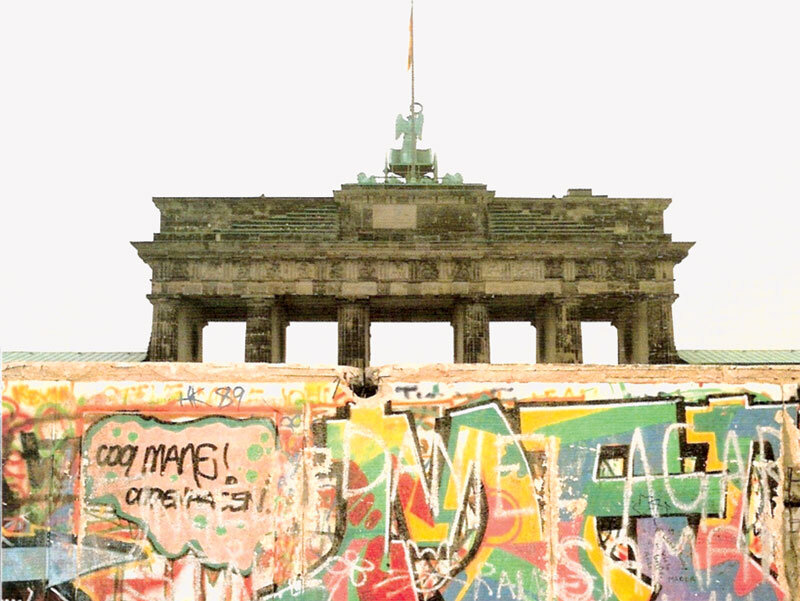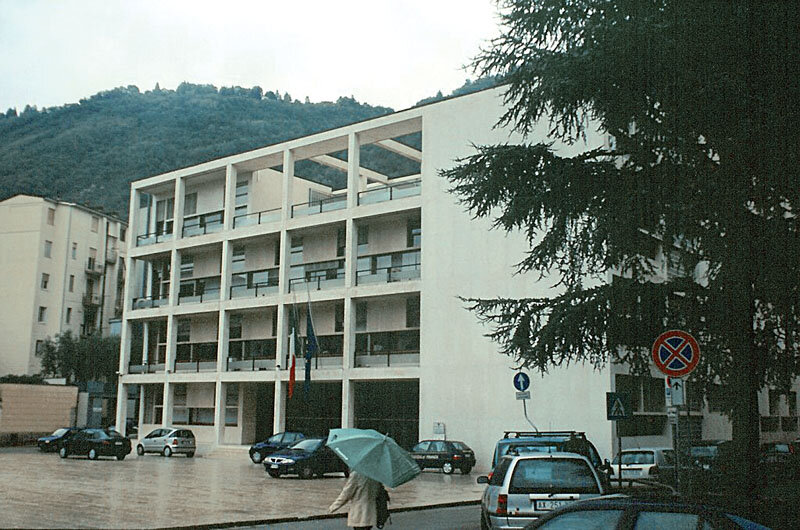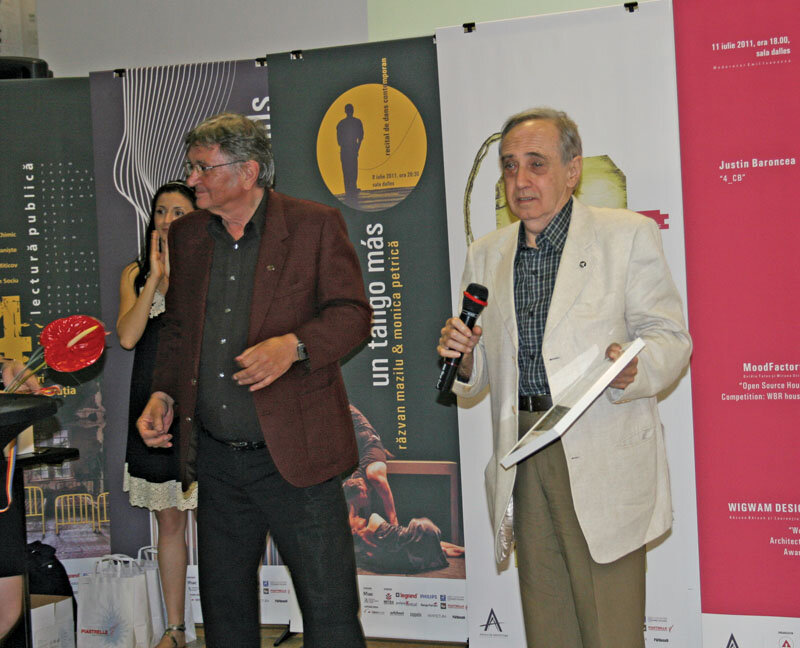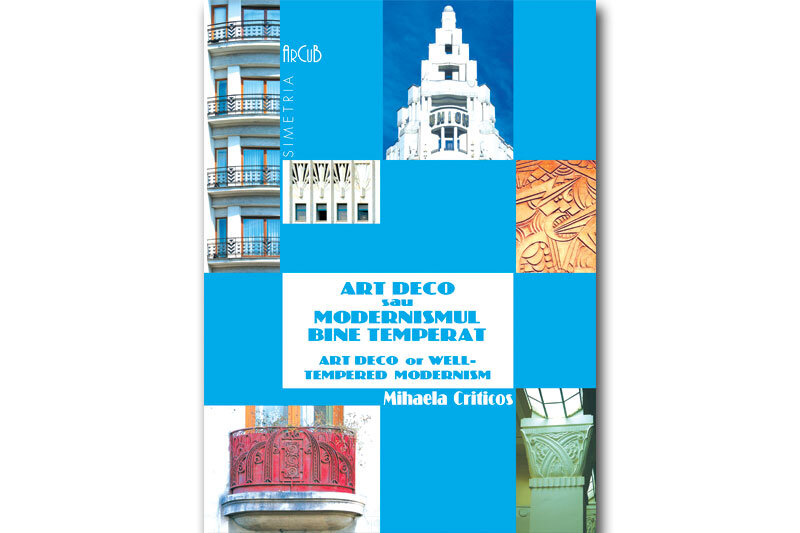
Public versus privat în România postdecembristă - Urbanismul și arhitectura pe bază de „Extras de Carte Funciară”
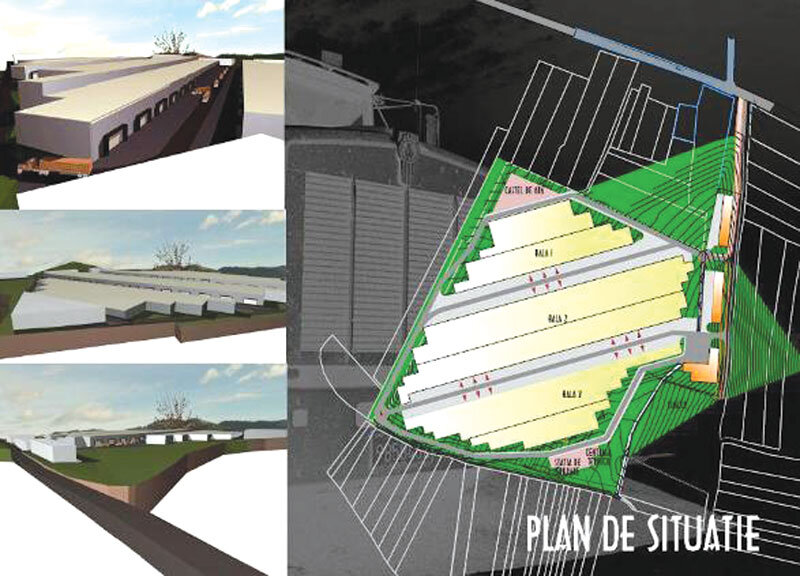
| Vremurile noastre postmoderne (dincolo de curentul arhitectural cu același nume), și prin aceasta istoriciste, ne-au obișnuit cu tratarea diacronă a stilurilor/tendințelor sau sincronă (tot un mănunchi de diacronii) din artă și arhitectură, unde istoria a premiat constant inovația. Succesiunea, realizată astfel, se manifestă de o manieră oarecum oedipiană (doar politicienii de anumite orientări pedalând pe posibilitatea reală a opțiunii revoluție-evoluție), cazuistica existentă alăturând peste milenii modul în care noul faraon părăsea palatul celui anterior pentru a realiza altul la o anumită distanță - manierei în care, cu sau fără manifeste, stilurile se debulonau unul pe celălalt: mai aproape modernismul de eclectismul secolului XIX și la rândul său de postmodernism. Succesiunea aceasta era manifestă și antitetică până la ruptură, funcție de producerea în perioade anistorice, istoriciste sau antiistorice. Motivarea lor descindea covârșitor dintr-o viziune tributară evoluției și progresului, cazurile reclamându-se din regresia față de o „vârstă de aur” sau din dezabuzatul „nimic nou sub soare” fiind rarisime, greu compatibile cu mesianismul creației (să reținem totuși hibridul „spirală dialectică”).
În 2008, prestigioasa Planning History Society a organizat la Chicago un congres internațional tocmai cu tema PUBLIC VERSUS PRIVAT – CONFLICT ȘI COMPLEMENTARITATE ÎN URBANISMUL CONTEMPORAN, date fiind reintegrarea în concertul internațional al fostelor zone totalitariste. Urbanismul și arhitectura, atât cele pe plan prestabilit, cât și intervențiile „spontane”, au presupus de la apariție contractul social, cu definirea raporturilor dintre public și privat. Din aceasta rezultă că oricât ne-ar plăcea să modelăm spații și să glosăm pe game simple sau compuse de la public-privat până la public-semipublic-semiprivat-privat, istoria nemiloasă și lipsită de complezență ne dezvăluie că acest hedonism al creației volumetrice este determinat efectiv de alți factori. Pe parcursul celor peste patru decenii în care a operat în Europa de Est, comunismul a avut drept una dintre țintele predilecte ale agresiunii (și nu numai ideologice) tocmai privatul: sintagma „proprietatea este un furt”, evocarea numărului mare de articole din legislația anterioară vizând infracțiunile economice comparativ cu cele împotriva persoanei, omul urmând să se afle în centrul „noii lumi”, direcționarea spre modul de viață colectiv etc. urmăreau să justifice tocmai transformarea socială. Să nu uităm că ambiția sa era să creeze o lume nouă și unii apologeți clamau că aceste transformări vor fi aidoma celor chimice: ireversibile. Poate că nu trebuie să ocultăm rolul și responsabilitatea unor elite occidentale în inițierea, dezvoltarea și susținerea acestei ideologii (unii au creat chiar estetici care susțineau superioritatea artelor colective asupra celor individuale pe care le vor și înlocui), că au fost decenii în care mediile acestea culturale sau universitare erau dominante și exercitau un linșaj asupra celor care nu le împărtășeau aserțiunile. Pe de altă parte, să nu uităm că intelectualul, în idealismul său, este preocupat în cel mai înalt grad de posteritate și că totalitarismele sunt tocmai cele care te pot instala sau șterge din aceasta, de unde vulnerabilitățile relevate de istorie. Favorizat de necesitatea reconstrucției postbelice și de mutațiile sociale dorite, acest demers a afectat cadrul de viață atât prin urbanism, cât și prin arhitectură. Citiți textul integral în 3 / 2011 al Revistei Arhitectura. |
| ABSTRACT
Along the four decades it has operated in Eastern Europe, communism had as one of the main targets of aggression the private sector: the expression „property is a theft”, the large number of articles from the previous legislation targeting economical crimes compared to those against a person, the directing towards a collective lifestyle, etc. Romania, through its historical pattern (including the oscillation between synchronism and protochronism), has been extremely afflicted in this way and the backside of a prolonged post-revolutionary situation was an urban and architectural void. After 1990 Romania (with a historical oscillation between synchronism and protochronism) has been extremely afflicted and the backside of a prolonged post-revolutionary situation with a crisis of all authority resulted in an urbanistic and architectural void that changed dramatically the manner to make urban planning. The first years were those of urban planning „according the title of property on the land”. The last years are these of preliminary studies of metropolitan areas and neighborhoods compatible to this style of life. There are some layers that still compose the urban practice today. Ordinary people still do not have an urban culture and do not know their rights as consumers because they inherit effects of the „weak state” totalitarian that replaced traditional democratic structures with a continuum amorphous. The customer attempt to earn at least 100% and is ready to do all on this way. The ordinary designer must observe quite all because design is only 1-10% from the total amount of the work (Doctor Faustus must have been a planner because we a ready to sell our soul to realize „our great oeuvre”). The Ministry had some benefit by European contacts, but is limited in action by the present philosophy of decentralization and local autonomy. Some urban planners from universities are freer and they try to promote quality and exercise some influence on future planners and we intend to present some works derivated from TOD (Transit-Oriented Development). There is an oscillation between the American model of neighborhoods and various European models (not synchronized because Romania is still emergent and not so crowd in this instant), a certain seduction is aroused by New Urbanism around Prince Charles and the cult of historical patrimony (see by some like „title of propriety”). The merit in the last years comes from the local’s councils that started to not make admittance of exaggerate exploitation of soils or building of blocks of flats in residential areas, asking a minimum of equipment for the new neighborhoods, not admitting abusive changes of general plans by zonal plans and even starting to demolish some illegal buildings. We can only hope that the reintegration of Romania into this domain will not generate comments such as the AA chronicle at the first Romanian pavilion after 1989: half laments after the historical monuments demolished by Ceausescu and the other half undigested exercises of postmodernism and deconstructivism. We must admit that the merit for a change comes last years from the citizens and the local councils that started to not make admittance of exaggerate exploitation of soils or building of block of flats in residential areas, ask a minimum of equipments for the news neighborhoods, not promoting the acceptance of abusive changes of general plans by zonal plans and every started to demolish some illegal buildings. |


